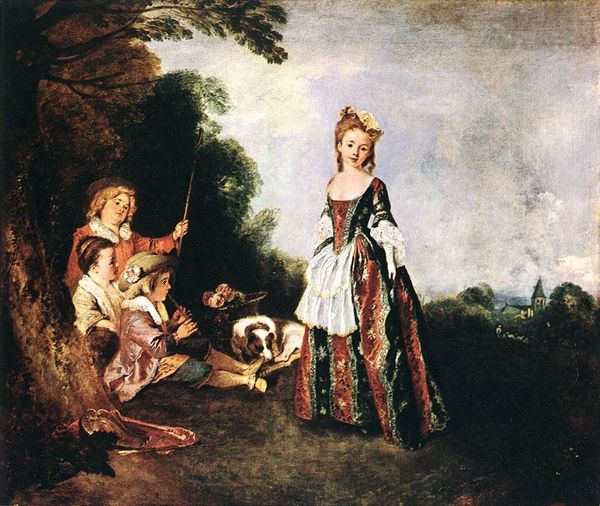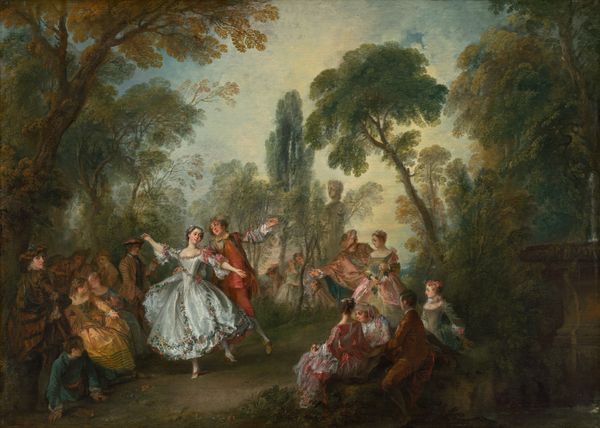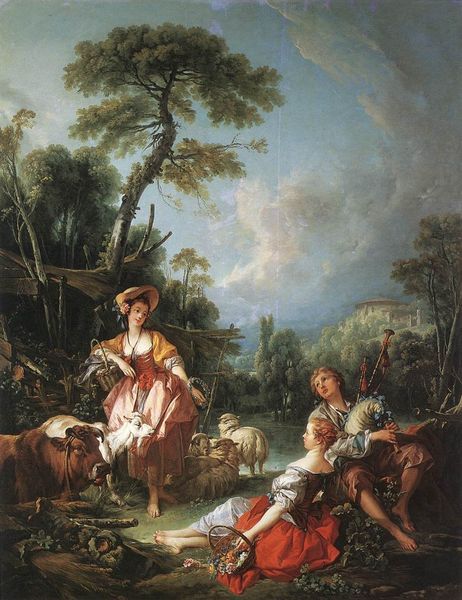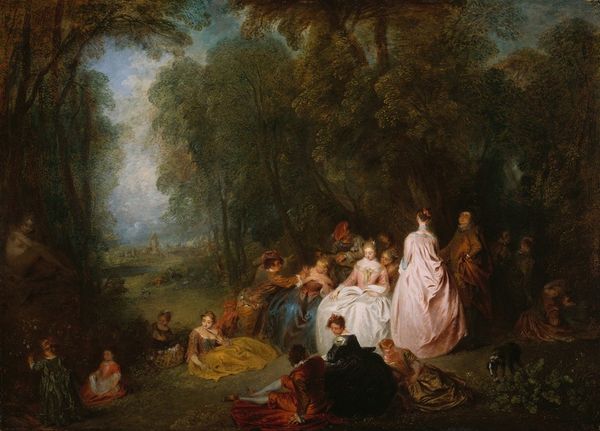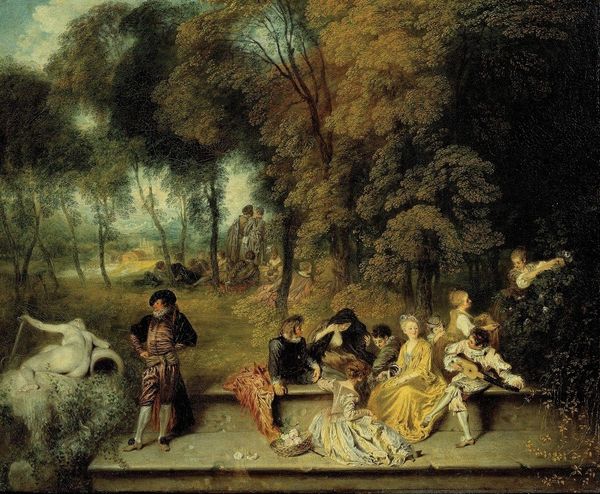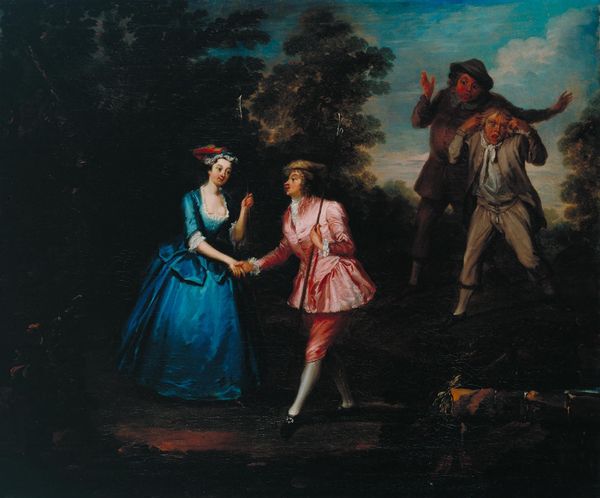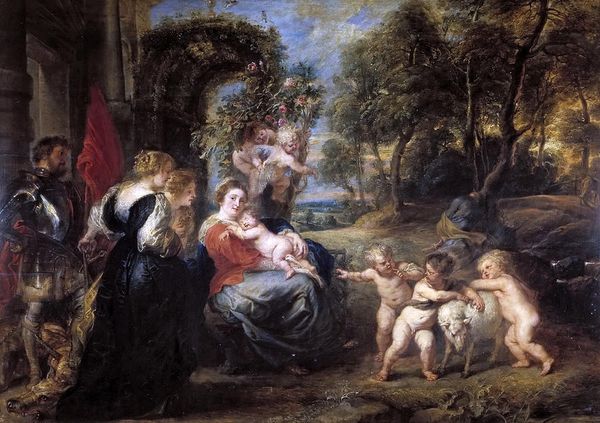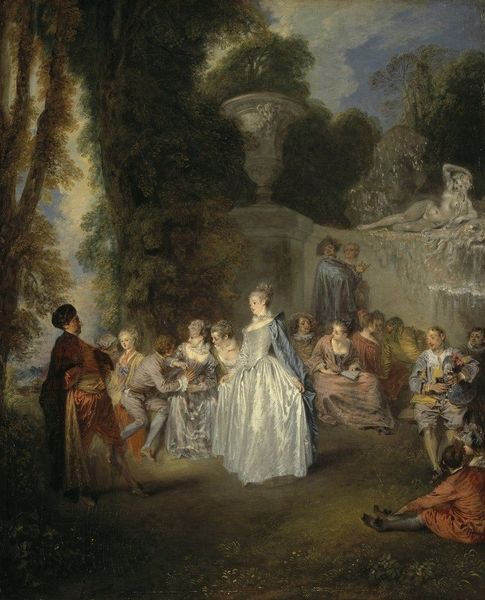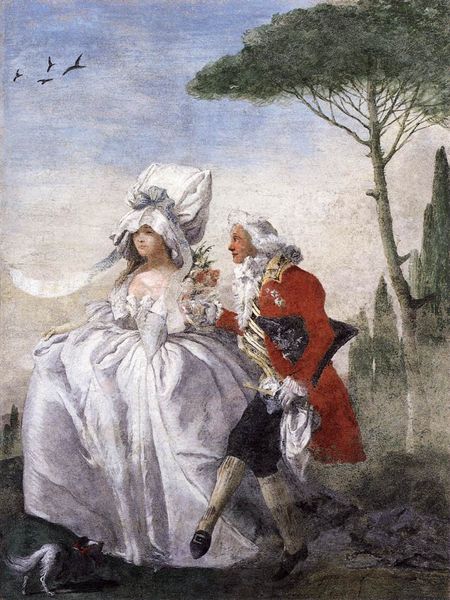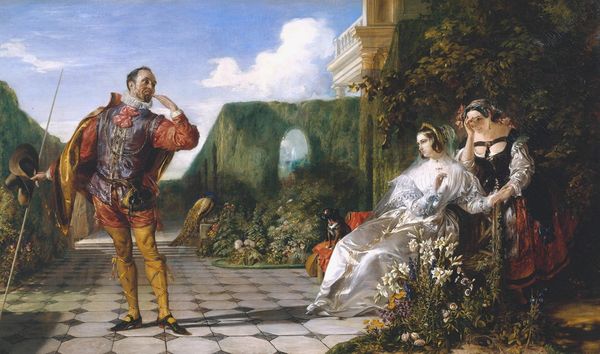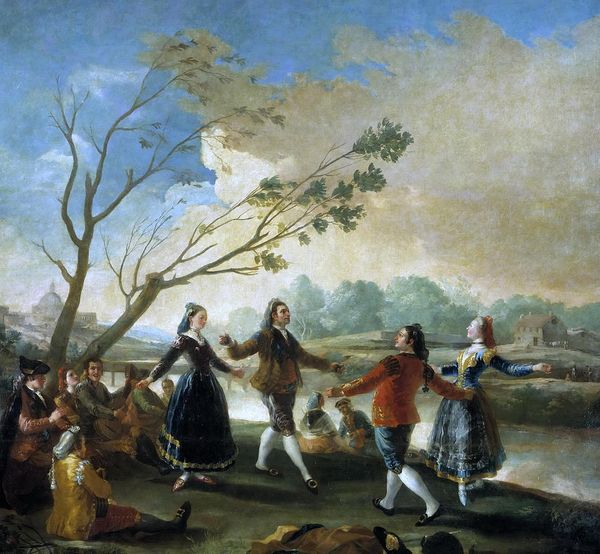
oil-paint
portrait
gouache
oil-paint
landscape
figuration
oil painting
genre-painting
female-portraits
rococo
Dimensions: 79 x 107 cm
Copyright: Public domain
Curator: Looking at Antoine Pesne’s "Marianne Cochois," made around 1750, my first thought is 'performance.' The entire scene seems arranged, theatrical. Editor: The imagery is fascinating! The mask on the dancer... what cultural rituals or traditions could inform the symbolism there? And consider the musical instruments and pastoral backdrop. It's like an unfolding dreamscape filled with aristocratic iconography. Curator: Absolutely. Think about the power dynamics embedded within these leisurely activities. Who is performing for whom? Who has access to these spaces of leisure? It’s about carefully constructed identities in a world governed by strict social codes. This rococo aesthetic often served as a visual language that reinforced societal hierarchies. The mask, therefore, operates not just as playful concealment but as a tool of that hierarchy, subtly masking disparities of power, perhaps even complicity in systems of oppression. Editor: The figures in the background seem intentionally blurred. Almost as if to indicate their secondary, yet ever-present, role. Do you read their muted appearance as commentary on social hierarchy, maybe suggesting that appearances and participation are only accessible to some, whereas the reality may be concealed behind status? Curator: I do. And the vibrant, almost saccharine colors highlight that tension beautifully. By emphasizing this artificiality, Pesne seems to subtly critique the artifice inherent in the rococo period’s aesthetic values. It's as if he's hinting at the rot beneath the glamour. What appears to be just a scene of frivolous amusement is underscored by exclusion, or, worse, something even more ominous. Editor: The symbolism speaks of something lurking beneath the idyllic surface, of social constraint, and potentially even danger masked by gaiety. I suppose this work prompts one to ask—what other societal constraints, cultural dynamics, gender dynamics were at play, but masked? Curator: That’s why, for me, "Marianne Cochois" serves as such an insightful reminder: it makes us confront not only what is on display but also the unseen forces that shaped its creation and its enduring reception. Editor: Precisely. It reveals a fascinating lens through which we can study gender roles and the era's collective unconscious.
Comments
No comments
Be the first to comment and join the conversation on the ultimate creative platform.
